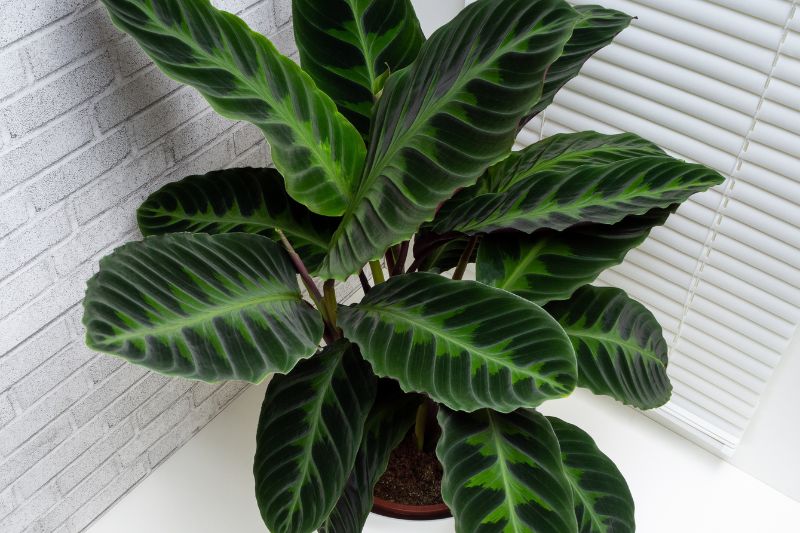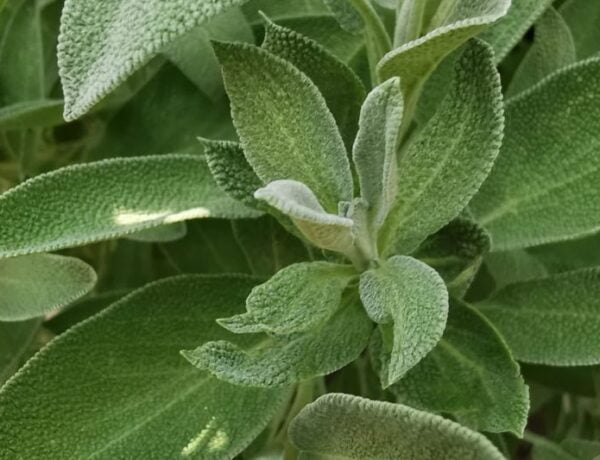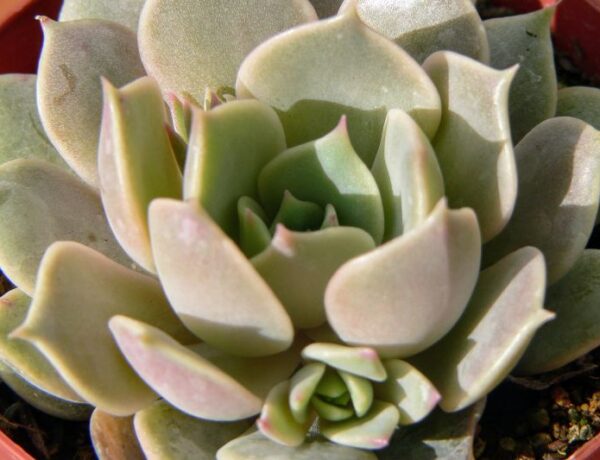If you’re reading this, it’s likely you’ve caught the Jungle Velvet Calathea fever. Can’t blame you; it’s pretty much love at first sight for most of us!
Officially known as Goeppertia warscewiczii, this Calathea is a total scene-stealer with its rich foliage and intricate designs. Seriously, it’s like having a piece of tropical rainforest right in your living room. How cool is that?
But hold up—before you bring a Jungle Vevelt Calathea into your space, you’ve got to know how to care for it properly. That’s exactly why I’ve put together this comprehensive guide, packed with all you need to know to make your plant thrive.
So grab a cup of herbal tea, or maybe even some chilled rosé, and let’s see what Jungle Velvet Calathea need to shine.
Table of Contents
1. General Information & Taxonomy
| Scientific name: | Goeppertia warscewiczii |
| Common names: | Jungle Velvet Calathea |
| Native to: | Central and South America |
| Toxicity: | Non-toxic to pets and humans |
| Mature size: | Up to 2-3 feet |
| Category: | Houseplant, Ornamental |
| Growth Rate: | Moderate |
| Hardiness: | Not frost-tolerant |

2. Jungle Velvet Calathea Care & Growing Requirements
» Watering
The hydration game is strong with this one. Jungle Velvet Calathea craves consistently moist soil but hates waterlogged roots. The key? Let the top inch of the soil dry out before watering. Opt for filtered or distilled water; as it can be a little sensitive to tap water’s chemicals and minerals.
» Light
Bright, indirect light will keep your Jungle Velvet looking its best. While it doesn’t like to be in direct sun, dark corners are not great either. Find a cozy spot near a window with filtered light, and your Calathea will thank you.
» Soil
A well-draining, peat-based potting mix is ideal. You can even add a bit of perlite for better aeration – your Calathea will appreciate the extra effort!
» Temperature
This tropical plant thrives in warmer temperatures, ideally between 65-75°F. Anything below 60°F, and your Calathea is going to throw a fit.
» Humidity
Humidity is this plant’s best friend. A level of 60-70% is what you’re aiming for. If your home’s air is dry, consider placing a humidifier nearby.
» Fertilizer
During the growth period, which typically spans from spring to summer, a monthly dose of nitrogen-based balanced fertilizer is recommended. Remember, less is more; dilute the fertilizer to half-strength. This plant isn’t a heavy feeder, so a lighter touch is best.
🌱 Quick tip: Be wary of mineral buildup in the soil. Over time, excess minerals can accumulate and create an unfriendly environment for your Calathea. To counter this, flush the soil every three months. Simply water the plant thoroughly until you see water draining out from the bottom. Repeat once more to ensure that all excess minerals are washed away.
3. Jungle Velvet Calathea Maintenance and Propagation
» Repotting
Repotting needs to happen every 1-2 years to give it room to grow and refresh the soil. Pick a container that’s about 1-2 inches larger in diameter than the current one. This gives the roots a bit more room without overwhelming them. When repotting, check for root rot and trim as needed.
Also, be sure to use fresh, well-draining soil to set your Jungle Velvet Calathea up for success in its new home.
» Pruning
Sometimes, a little trim is all it takes to rejuvenate and bring out the best in your plant. Remove any yellow or dead leaves and cut away faded or brown parts. This not only improves appearance but also redirects energy back into new growth. Remember to use sterilized scissors to avoid the spread of diseases.
» Propagation
So you’ve fallen in love with your Jungle Velvet Calathea and want more of them around. Totally understandable!
The best method for propagation is division. When you’re repotting, gently divide the root ball into smaller sections, each with some leaves and roots attached. Plant these divisions into fresh soil in new pots, and you’ve got yourself some Calathea babies!
4. Common Issues
Even with the best intentions, sometimes things just go awry. But no worries, we’ve got your back! Here’s a rundown of common issues you might encounter with your Jungle Velvet Calathea, along with some solutions.
- Leaves Turning Yellow: If you notice the leaves going a bit yellow, it’s often a sign of overwatering. Dial back on the H2O and make sure you’re letting the top inch of soil dry out between waterings.
- Leaves Turning Brown: Brown tips usually indicate low humidity or over-fertilization. Check the humidity levels and consider cutting back on the fertilizer if you’ve been a bit generous.
- Curling Leaves: When the leaves curl up like a roll of parchment, that’s usually a cry for more humidity. Consider placing a humidifier nearby or using a pebble tray with water to boost humidity levels.
- Leaf Droop: If the leaves look a bit droopy and sad, the plant might be cold or exposed to drafts. Make sure it’s in a warm spot and out of the way of air vents or drafty windows.
- Fading Color: Lackluster color is often a sign of too much direct sunlight. Relocate your Jungle Velvet to a spot with filtered or indirect light to help it regain its vibrant hues.
5. Jungle Velvet Calathea Diseases & Pests
While Jungle Velvet Calatheas are generally resilient, they’re not entirely immune to diseases and pests. The most common disease you might encounter is root rot, often a consequence of overwatering and poor drainage. Cut away the affected roots and replace the soil to nip this problem in the bud.
As for pests, spider mites and mealybugs are the usual suspects. They’re tiny but mighty when it comes to causing damage. If you see any signs of these critters, like webs or a cottony substance on the leaves, a natural insecticidal soap is your go-to solution.
Conclusion
You’ve got the tools, the tips, and the know-how to make your Jungle Velvet Calathea thrive. From the essentials like lighting and watering to the nitty-gritty of disease and pest control, you’re set for a rewarding plant-parenting journey. And remember, the best way to learn is by doing, so don’t hesitate to get your hands a little dirty—your Calathea will thank you!
If you’ve fallen head over heels for Calatheas, you might want to check out our guide on other captivating Calathea varieties. Trust us, they’re all as fabulous as the Jungle Velvet. And if you’re drawn to the striking leaf patterns of this plant, our care guide on the Zebra Plant (Goeppertia Zebrina)—another look-alike with similar care needs—might be right up your alley.






No Comments